ICDD Course Faculty
Carefully selected from both academia and industry, our team of instructors represents a range of expertise, designed to meet your training needs. With extensive experience in various X-ray analysis fields, our instructors combine the best of theory and practice for a comprehensive learning experience.
ICDD Course Faculty
Carefully selected from both academia and industry, our team of instructors represents a range of expertise, designed to meet your training needs. With extensive experience in various X-ray analysis fields, our instructors combine the best of theory and practice for a comprehensive learning experience.
Click on faculty member photo to learn more.
X-ray Fluorescence Course Faculty
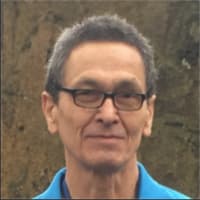
Larry Arias
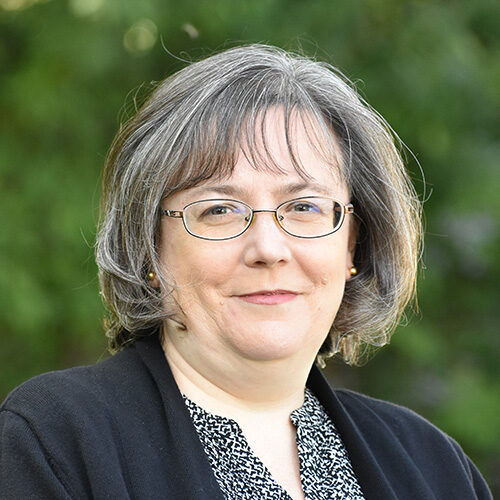
Dr. Meredith M. Daniel-Prowse
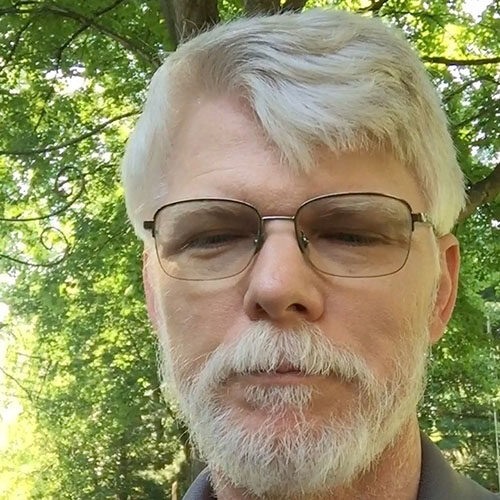
Dr. Andy Drews
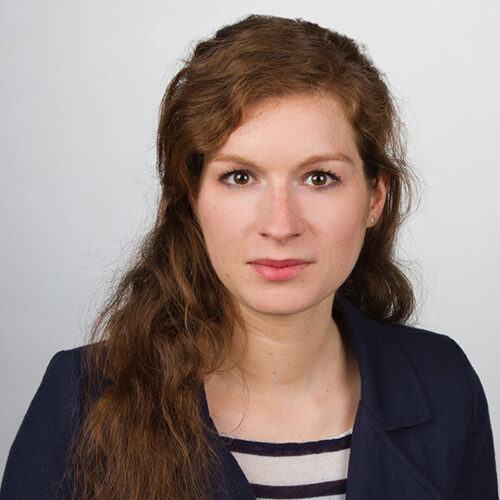
Dr. Julia Sedlmair
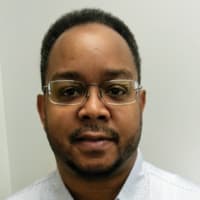
Eric Smith
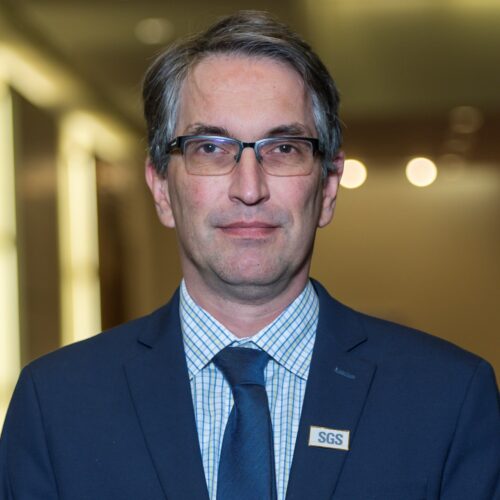
Alexander Seyfarth

Maggi Loubser
Larry Arias
Larry is the Manager XRF – US Applications for Bruker AXS. He has been working in the field of XRF for over 30 years.
He began his career as a Field Service Engineer with Philips Electronic Instruments in 1976 servicing and installing XRF and XRD instruments. Larry left the Service Department and joined the XRF Applications Laboratory at Philips in 1985. Three years later he left Philips to join the Siemens XRF Applications Laboratory. Siemens was later acquired by Bruker and is now known as Bruker AXS.
During his time at both Philips and Bruker Larry organized and taught the user training courses and provided on-site training in XRF. Working in a manufactures’ applications laboratory for 20 years provided Larry a broad range of exposure to different analytical challenges in XRF.
Dr. Meredith M. Daniel-Prowse
Meredith Daniel-Prowse is an Applications Scientist for SPECTRO Analytical Instruments for their X-Ray Fluorescence Spectroscopy product line. She holds a doctoral degree in Analytical Chemistry from Wake Forest University.
Meredith has a strong background in analytical instrumentation including elemental analysis via XRF and ICP-OES, vibrational spectroscopy including laser photoacoustic spectroscopy, and various sample preparation methodologies. In her 15 years with SPECTRO, she has worked closely with customers from various industries supporting them to solve their analytical needs through method developmental and sample preparation.
Dr. Andy Drews
Andy Drews was born near the shore of Lake Michigan in Ludington, Michigan. After completing his high school education, he traveled to Michigan Technological University on the Keweenaw peninsula in Michigan’s Upper Peninsula for his undergraduate education, where he received his BS in Physics in 1984. From there, he continued his education at the University of Illinois, Urbana-Champaign, where he married Sue, a fellow student of Physics in 1989 and received his PhD in Physics in 1990 for his work on electron spin-lattice relaxation in proteins.
After receiving their PhDs, Andy and Sue moved to Washington DC to continue their studies under Office of Naval Technology and National Research Council postdoctoral positions at the Naval Research Laboratory. There, Andy used NMR, microscopy, XRD, optical reflectometry, low-temperature resistivity, magnetometry and high-pressure AC susceptibility techniques to study high-temperature superconductors. He later became a guest researcher at the National Institute of Standards and Technology (NIST) where he determined the ternary phase diagram for the SrO-TiO2-Nb2O5 ceramic system and studied the BSSCO high temperature superconductor using high-temperature XRD. Following his postdoctoral appointments, he became an Instrument Scientist at the NIST Center for Neutron Research where he developed an ultra-small angle neutron scattering station which is still in use today.
In 1997, Andy and Sue moved to Ann Arbor, Michigan after Andy took a position at Ford’s Research Laboratory in Dearborn Michigan, where he was appointed as a Technical Specialist for characterization of automotive materials using XRF and XRD. In the 25 years he has held that position, he has been faced with analytical questions spanning a diverse range of materials, including catalysts, battery and hydrogen storage materials, coatings, corrosion products, alloys, glasses, polymers and even dirt. His experience with XRF includes WDS, handheld EDS and mapping XRF.
Andy recently moved to Ford Ion Park, Ford Motor Company’s new Battery Center of Excellence and is involved in development of future battery technologies, though he continues to operate the X-ray lab. Andy is an author on over 70 academic articles, 20 Ford Technical Reports and is an inventor on over 40 patents.
Dr. Julia Sedlmair
Dr. Julia Sedlmair is a Sr. Application Scientist at Bruker AXS. She works with clients of a very wide range of applications, including building materials, geologic materials, metals, glasses, pharmaceuticals, and food and feed. She serves as the expert during sales interactions and makes recommendations for which systems and sample preparation are suitable for which application. Some of her other responsibilities are generating content for XRF applications and probing the limits of commercial XRF equipment.
She has been with Bruker for seven years, except for a two-year break working as product manager for FTIR microscopy at Thermo Fisher. Dr. Sedlmair received her degree from the Georg-August University in Goettingen, Germany, at the Institute for X-ray Physics. She has published over 20 articles on X-ray microscopy and spectroscopy, and presented scientific posters and talks at over 20 conferences. She was a postdoctoral researcher at the synchrotron in Madison on a joint research project between the US Forest Products Lab and the UW Madison.
Dr. Sedlmair is happily married to an engineer with whom she spars over scientific questions and shares four-year-old twins.
Eric Smith
Currently working as an Applications Scientist for SPEX SamplePrep LLC. Eric’s duties include demonstrating and installing instruments, working with customer samples, advising customers, writing and editing, attending trade shows, etc.
He received his B.S. in Chemistry from Kean University, NJ.
Area of expertise: Sample preparation, particularly for XRF.
Alexander Seyfarth
Alexander Seyfarth is an X-ray spectroscopist with over 20 years of experience with XRF and XRD. Alexander holds a Master’s degree in Mineralogy from the University of Giessen (1996). Thesis work for his graduate studies focused on the chemical and phase investigation of kiln deposits using XRF, EPMA, and XRD, as well as Rietveld structure refinement on isolated phases. Widely traveled within Europe and the Americas, he has worked onsite to install, commission, and calibrate systems ranging from Semiconductor and Cement to Mining sites.
Training users has been part of his professional career from PC training in the early 80s to XRF in more recent years. Since 1990, he has been using XRD and XRF techniques and instrumentation as part of the research and teaching of assistants at the University of Giessen. Starting in the early eighties, he advanced as a computer buff from a ZX81 to PC’s, running a PC-based consulting and services business on the side from 1986.
From 1996, Freelance and Contract work for ceramic and cement companies within Germany, he moved in January 1997 as an Application Scientist XRD and XRF to SIEMENS AXS in Karlsruhe. In December 1998, he transferred to Madison, WI, as an Application Scientist XRF, XRD at BRUKER AXS. A vertical move brought him in 2003 from Senior Application Scientist XRF and Product Support XRF to Customer Service. From 2006 to 2011, he was the Product Manager XRF North America for BRUKER.
After a too short stint as Sr. Application Scientist for the ARL brand with THERMO SCIENTIFIC in Madison, he was recruited as the new Sr. Global Product Manager for Hand Held XRF for BRUKER in Kennewick, WA, USA. This allowed him to directly influence and drive product development and the quest for more performance and capabilities in the pXRF segment! Having completed the successful introduction of the TITAN and new TRACER5i, he changed from the vendor into a user function as the new Global Technical Manager for XRF with SGS Minerals.
He was taught by James Willis when he started with Siemens and has been involved with the course since 2004 as a teacher and marketing support. Maggi Loubser and he are also teaching the XRF Bootcamp organized by Getty and Yale for Art Conservators.
He is acting Chief Operating and Marketing Officer of the London X-Ray Consulting Group LLC and is in charge of the licensing and technical content of training materials.
Maggi Loubser
Maggi’s career in X-ray Fluorescence Spectroscopy started as a laboratory technician at the Atomic Energy Corporation of South Africa in 1988. There she learned XRF in a process control laboratory.
In 1994, she joined the Geology department of the University of Pretoria (UP), where, for the next fourteen years, the X-ray laboratory was built up to a state-of-the-art facility, presenting annual short courses in XRF, Representative Sampling, and Sample preparation.
She joined PPC Cement in November 2008, where her duties involved the training, mentoring, and capacity building of the chemists in the group, ensuring world-class analytical laboratory practices, managing compliance to minimum standards, and implementing best practices across the group. She was involved in the African expansion, assisting in the planning, building, and commissioning of laboratories all over Africa. Since October 2014, she has headed the R&D team, finding innovative ways to address the challenges of a fast-changing cement manufacturing environment.
In April 2016, GeoMag GeoChem was created to provide her with the opportunity to do what she likes best, teaching, technical support in various industries, and undertake projects that can make the world a better place, without being limited by corporate structures.
In January 2019, the University of Pretoria convinced her to return to academia on a two-year contract to head up a new Master’s programme in Heritage Conservation.
Currently, her life is a potpourri of different experiences: She supports the mining and manufacturing industry in the training of chemists and calibration of WD and EDXRF spectrometers, assists in method development, does gap identification audits, and walks the journey with a laboratory to address those. She does a lot of work on handheld spectrometers, setting up custom calibrations for clients in mining and manufacturing, acting as an occasional crash test dummy for the software developers and aims to introduce portable XRF as a benchmark technique for art and conservation in Africa. This allows her to play with anything from shipwreck treasures to paintings from the old masters and heritage sculptures. Her latest challenge as programme manager for the Heritage Master’s programme has her teaching science to students with a humanities background to equip them to better understand the materials they work with in conservation and research of cultural heritage objects.
X-ray Powder Diffraction Course Faculty
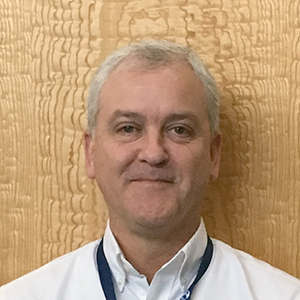
Dr. Thomas Blanton
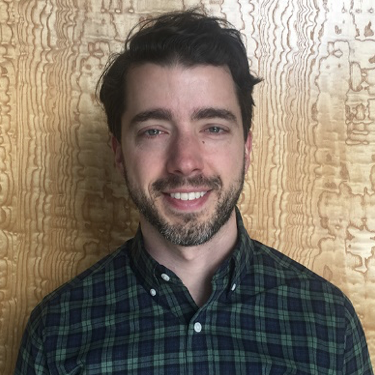
Justin Blanton
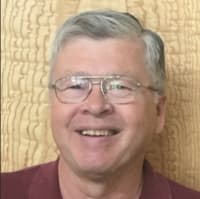
Dr. Cyrus Crowder
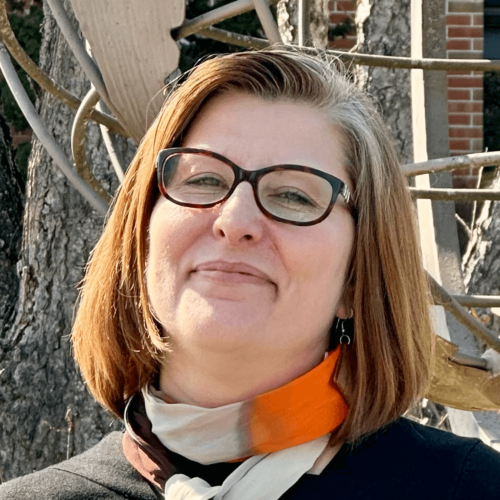
Dr. Anja Vieira Dosen
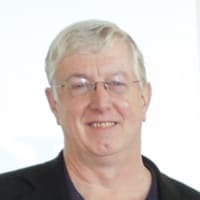
Dr. Timothy Fawcett
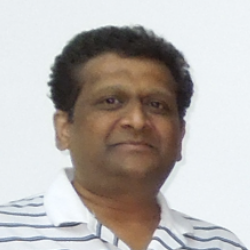
Dr. Soorya N. Kabekkodu
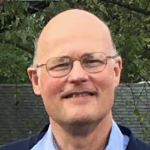
Dr. James Kaduk
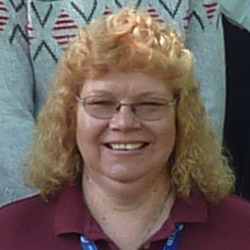
Dr. Susan L. Quick
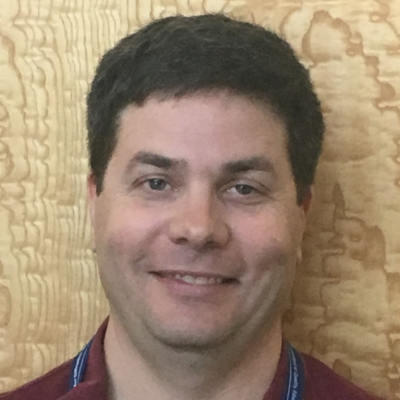
Dr. Mark Rodriguez
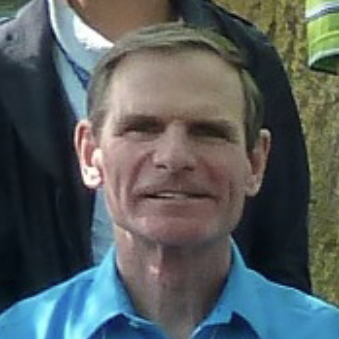
Charles A. Weth
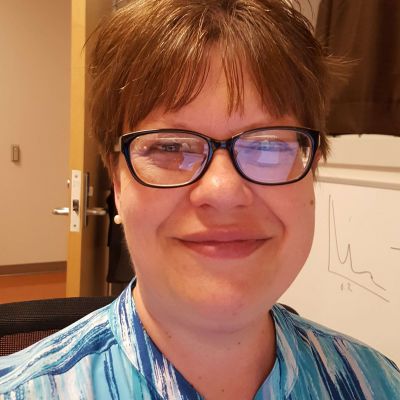
Nichole Wonderling
Dr. Thomas Blanton
Tom is the Executive Director and Principal Scientist at ICDD. Before joining ICDD he was a Senior Principal Scientist at Eastman Kodak Company where he worked in industrial applications of X-ray diffraction and X-ray fluorescence for 31 years. He was responsible for the operation of the X-ray Spectroscopy Laboratory, utilizing diffractometers for powder, pole figure, nonambient, high-resolution, reflectivity, and two-dimensional XRD. Materials analyzed included inorganics, organics, solid state devices, thin films, corrosion products, ceramics, pharmaceuticals, polymers, and nanomaterials. Tom was also the Technical Leader in the Specialty Materials Development Laboratory. His area of focus was utilization of XRD for microstructure characterization resulting in new materials development for intellectual property and product development. Tom has 220+ publications including 5 book chapters, 46 U.S. Patents and 57 international patents.
Tom has served as a member of the ICDD Board of Directors for the terms 1992-1998 and 2004-2013, serving as Chairman 2008-2012. He has also received the honor of being named an ICDD Distinguished Fellow. Tom has been an instructor at the SUNY Albany and ICDD XRD Clinics for more than 30 years, and has served as a lecturer at the University of Rochester.
Justin Blanton
Justin began his career at the ICDD in the summer of 2000 as an intern under the supervision of Dr. John Faber. During his two-year internship, Justin created software to analyze the performance of relational database searches in the Powder Diffraction File® (PDF), as well as spearheaded a project that allowed users to data mine the PDF using any web browser.
Upon graduating from college in 2002 with a Bachelor’s in Computer Science, Justin was hired as a full-time Software Engineer at ICDD to continue software development and assist the ICDD in its transition from a “flat file” database to the next-generation relational database (RDB). During the next few years, he re-wrote the OEM/vendor licensing library to be compatible with all databases, transitioned software from a 7-digit PDF number to an 11-digit PDF number, as well as added support for the calculation of powder diffraction patterns from atomic coordinates.
As existing software and database limitations became apparent, Justin lead a small team in 2005 that rewrote the entire ICDD software suite from Visual Basic to Java. In addition, the team converted the back-end database engine from Microsoft Access to Sybase SQL Anywhere. This new version was much faster, more flexible, and contained many new features. Over the past ten years it has been used by thousands of scientists worldwide for materials analysis.
After being promoted to Senior Software Engineer in 2007, Justin became the project leader for the PDF-4+, PDF-2, and PDF-4 Minerals products. He continued his software development efforts by adding support for all major XRD manufacturers, implementing a full pattern analysis algorithm, creating dynamic 2D ring pattern simulations, adding support for constant wavelength neutron diffraction pattern simulations and analysis, as well as aiding the implementation of displaying modulated structures.
In 2014, Justin was promoted to Manager of Engineering and Design where he leads a group of developers who continually update the PDF software with new features on a yearly basis. Recent developments include importing 2D diffraction patterns for phase identification, isotopic substitution for neutron diffraction pattern simulations, and modifying existing algorithms to analyze time-of-flight neutron diffraction patterns.
Dr. Cyrus Crowder
Dr. Crowder received his B.S. in Chemistry at the University of Missouri – Rolla in 1976 and followed that with 2 years of teaching high school physical sciences and mathematics in Missouri. He returned to the University of Missouri – Rolla to receive an M.S. degree in Physical Chemistry in 1980 and a Ph.D. in 1982 using neutron diffraction to do structural studies on magnetic intermetallics and their hydrides.
Dr. Crowder joined the Dow Chemical Company in 1982 and has been active in the field of X-ray diffraction since that time. As a member of Dow’s Analytical Sciences Laboratory, he used various X-ray diffraction techniques to solve both R&D and production-related problems in the fields of polymer science, pharmaceuticals, catalysis, ceramics, electronics, and composite materials. He was co-winner of an IR-100 award in 1987 for his work on the development of the combination DSC/XRD instrument and co-winner of the International Zeolite Association Breck Award in 1989 for his determination of the structure of VPI-5 – a molecular sieve with the largest known pores at the time. Before his retirement from Dow in September 2007, his responsibilities included Global Technology Steward for X-ray diffraction and tomography and representative for Dow on the DND-Cat Board of Directors at the APS synchrotron, Argonne National Laboratory.
He served for four years on the Board of Directors of the ICDD (1994-1998) and was elected ICDD Fellow in 2000. Dr. Crowder joined the ICDD as Principal Scientist in September of 2007, retiring in 2014.
Areas of expertise: X-ray powder diffraction, phase identification, and quantitation, Rietveld analysis, synchrotron-based powder diffraction, neutron diffraction, crystallography, combination thermal/phase analyses (DSC/XRD), and X-ray microtomography.
Dr. Anja Vieira Dosen
Anja is the Senior Scientific Editor and Database Supervisor at ICDD. Her major role is implementation of editorial tasks to ensure the quality and integrity of the Powder Diffraction File by reviewing crystal structures and X-ray diffraction patterns. Anja is a research scientist with more than fifteen years of research and teaching experience. Her research is interdisciplinary and includes mineralogy, crystallography, materials science, chemistry, and biogeochemistry investigations of clay minerals, black shales, and calcium-phosphate biominerals like brushite, monetite, and hydroxylapatite. Before joining the ICDD she was as a Senior Scientist at the Pontifical Catholic University of Rio de Janeiro, where she was in charge of the Laboratory for Thermal Analyses and Non-Ambient X-ray Diffraction. Anja is proficient in advanced characterization techniques including ambient and non-ambient in situ X-ray diffraction, thermal analyses (TG/DC), SEM/EDS, optical microscopy, MS, and XRF. Her research focused on the advanced characterization and development of zeolite-based catalysts, and materials with zero and negative thermal expansion.
Anja has published more than twenty publications in peer-reviewed journals and holds a Ph.D. from the Geology Department at the State University of New York at Buffalo.
Dr. Timothy Fawcett
Tim received his B.S. in Chemistry at the University of Massachusetts and a Ph.D. degree in Inorganic Chemistry at Rutgers University. He worked at the Dow Chemical Company from 1979-2001 and then was Executive Director of the ICDD until his retirement in 2017.
At Rutgers he combined X-ray crystallography with various spectroscopy techniques to study amino acids, chromophores of metalloproteins, and cupruretic agents for Wilson’s disease. He was hired into the X-ray diffraction laboratory of the Analytical Sciences Department of the Dow Chemical Company in Midland, MI. During the next 10 years, he worked in the X-ray diffraction laboratory performing a wide range of analyses of corrosion products, inorganic materials, advanced ceramics, catalysts, pharmaceuticals and polymers. He eventually managed the inorganic analysis laboratories in Analytical Sciences, that included XRD, XRF, NAA, AA, ICP, AES, CHN, IC and electrochemical analyses. He worked with a team of scientists that developed and patented the simultaneous DSC/XRD/MS instrument, which won an IR-100 award in 1987. From 1986 to 1988 he served on the Board of Directors for the ICDD.
During the 1990’s, Tim managed several new product development groups in advanced materials, electronics, coatings, dispersions, ceramics and automotive components for different business organizations within the Dow Chemical Company. Tim was awarded the V.A. Stenger, MASTL, Inventor of the Year, Cramer, and Spangenburg Awards for analytical sciences, pharmaceuticals, coatings and ceramic product development. He became an ICDD fellow in 2000 and joined the ICDD as Executive Director in 2001. During his career, Tim has authored over 60 publications, been a frequent guest lecturer, and presented several papers and workshops at global X-ray conferences. Several of his publications have been incorporated in the book, Methods & Practices in X-ray Diffraction, published by the ICDD. In 2009 he received the Jenkins Award for Lifetime Achievement in the advancement and use of X-rays for materials analysis. As Executive Director, he directed and participated in the dramatic growth of the Powder Diffraction File to >950,000 entries, which is now used by scientists in over 120 countries. Tim is currently the Chairman of the Organizing Committee for the Denver X-ray Conference.
Area of expertise: X-ray diffraction as an analytical technique.
Dr. Soorya N. Kabekkodu
Suri received his MS in Chemistry from the Mangalore University in India in 1992. Suri’s thesis, “Structural Phase Transition in Inorganic Systems: Insights from X-ray Diffraction Studies”, earned him his PhD in chemical crystallography from the Indian Institute of Science, a premier research institute in India, in 1999.
Suri joined the ICDD in June of 1999 as a Post-Doctoral Research Fellow and accepted the position of Editor of Calculated Patterns in 2000. In 2003, he chaired the task group to develop a method to assign quality marks to calculated patterns. He developed and implemented the algorithm to evaluate the quality of calculated patterns based on the task group outcome. Suri has calculated and critically-reviewed (using his data evaluation suite) more than 1,000,000 diffraction patterns.
Suri is currently the Editor-in-Chief of the Powder Diffraction File (PDF) where he remains heavily involved in the significant crystallographic review of crystal structures and X-ray diffraction patterns prior to their publication. Over the years, he has developed various algorithms to evaluate and classify crystal structures, optimizing the editorial process. Automating the subfile assignment has enhanced the search/match capability using the Powder Diffraction File. Suri has spearheaded several projects leading to many of the enhancements to the PDF, including the addition of atomic coordinates, quality mark assignment, extensive cross-referencing, structure prototyping and classification. The quality improvements to the PDF have a direct impact on phase identification processes.
Areas of expertise: Chemical crystallography, structural chemistry, computational crystallography, X-ray diffraction.
Dr. James Kaduk
After retiring from Amoco/BP/INEOS Technologies, Analytical Sciences Research Division, Naperville, Illinois, Jim began his consulting firm, Poly Crystallography Inc. He is also a Research Professor of Chemistry at Illinois Institute of Technology in Chicago, and an Adjunct Professor of Physics at North Central College in Naperville. While at INEOS, Jim served as an Associate Research Scientist running the XRD Laboratory. There, he characterized a wide variety of materials, including catalysts, organic small molecules, coordination complexes, polymers, corrosion deposits, and various sorts of crud. He is well-known for solving and refining crystal structures from powder diffraction data.
Jim is a former Chairman of the Board of Directors of the International Centre for Diffraction Data, and currently serves as Treasurer. He is a former Chair of the U. S. National Committee for Crystallography, Treasurer of the American Crystallographic Association, and Co-Editor of Acta Crystallographica B: Structural Science and Advances in X-ray Analysis. He is currently a Consultant to the IUCr Commission on Powder Diffraction a member of several other IUCr Commissions and Committees, and a member of the Denver X-ray Conference Organizing Committee. He is one of the three editors of Volume H of the International Tables for Crystallography: Powder Diffraction (2019). He is a member of the faculty of the ACA summer school on small-molecule crystallography, and teaches at other short courses and workshops around the world.
His more than 280 publications deal principally with the solution and refinement of crystal structures using powder data. He has contributed more than 1000 patterns to the Powder Diffraction File®.
Dr. Susan L. Quick
Since 1999, Dr. Quick has been an assistant professor of Computer Sciences and Engineering at The Pennsylvania State University. Her educational background includes degrees held in ceramic science and engineering and solid state science. Upon completion of her doctorate, she worked as a research associate at the Materials Research Laboratory at Penn State, where her research included calculation of powder diffraction patterns and the use of computer programs for analysis of powder diffraction data.
In 2022, Dr. Quick was awarded the ICDD Distinguished Fellow Award in recognition of her many distinguished contributions to the quality, content, coverage, and usefulness of the Powder Diffraction FileTM, in particular the Zeolite Subfile.
Dr. Quick has been a valuable asset to the ICDD X-ray clinic for over 20 years.
Dr. Mark Rodriguez
Department at Sandia National Laboratories in Albuquerque, NM, where he has been for 25 years. He earned his B.S. in Ceramic Engineering from Alfred University in 1988 and Ph.D. in Ceramics from Alfred University in 1992. He previously worked as a post-doctoral research associate in the Geology Department at Princeton University (1992-1994) and as a post-doctoral research associate at Sandia National Laboratories (1994-1997) prior to his full-time staff appointment. He is currently responsible for XRD and XRF characterization of new materials using standard powder XRD, single crystal XRD, texture/pole-figure analysis, reflectivity, micro-diffraction/fluorescence, and the use of multivariate statistical analysis in data reduction. Mark specializes in “in-situ” diffraction analysis such as high-temperature diffraction and data collection during applied fields. He has published over 300 technical papers, authored two book chapters, and has 8 issued patents.
Mark was named a Fellow of the ICDD in 2009, and has served on the ICDD Board of Directors as a Director-at-Large (2008-2012) and is currently the Chairman of the Technical Committee for ICDD. He has served as an instructor for the XRD-I Clinic for 18 years.
Charles A. Weth
Charles received his B.S. from Manhattan College, NY and his M.S. from Villanova University, PA. He currently works as a Senior Software Engineer in the Science Department at the ICDD. Charles is registered as a Professional Engineer in the state of Pennsylvania. Back in the days when the database was an ASCII text file, he coded numerical methods that laid the groundwork for the current Search Match product, Sieve+. Charles has seen the evolution of ICDD’s software from the time when it was a single product, fitting onto a single CD, through its transition to a 10 GB relational database, supporting five different products, in five foreign languages. He now prepares the installations for these products, a task which requires close teamwork within the many facets of the Science Department, as well as careful testing and documentation. This insight into the details of production and assembly allows him to sympathetically assist analysts experiencing technical difficulties.
Area of expertise: Development of scientific software
Nichole Wonderling
Nichole joined The Pennsylvania State University’s Materials Characterization Laboratory in 2000 where she manages a large user facility for X-ray diffraction. The lab offers five diffractometers, a SAXS/WAXS X-ray scattering instrument, a Laue back-reflection single crystal unit, a benchtop XRF, and a wide variety of X-ray sources, non-ambient chambers, and software packages to over 400 individual researchers each year.
Her primary role is working with students, faculty, and industrial partners to obtain quality data and analyze that data using a variety of resources including the ICDD powder diffraction file. Her research interests include powder diffraction, micro diffraction, high resolution diffraction, Laue back reflection diffraction, small angle X-ray scattering, non-ambient crystallization and phase identification/transformation studies, quantitative phase analysis via Rietveld and whole pattern fitting methods (Jade), and structure and orientation determinations.
Prior to her work at the university, she managed the chemistry lab of the North American Refractory Company (NARCO) at their State College, PA technical center for nearly seven years. In that role she supported the quality control and research efforts for the enterprise at a national level.
Nichole became a member of the ICDD and joined the ICDD XRD clinic as a faculty member in 2021. She holds a B.S. in Chemistry ACS from Clarion University and did graduate work at The Pennsylvania State University in Chemistry.
Rietveld Course Faculty

Dr. Thomas Blanton

Dr. Anja Vieira Dosen

Dr. Soorya N. Kabekkodu

Dr. James Kaduk
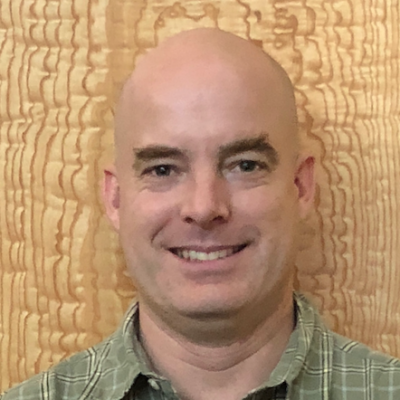
Dr. Joel Reid

Justin Blanton
Dr. Thomas Blanton
Tom is the Executive Director and Principal Scientist at ICDD. Before joining ICDD he was a Senior Principal Scientist at Eastman Kodak Company where he worked in industrial applications of X-ray diffraction and X-ray fluorescence for 31 years. He was responsible for the operation of the X-ray Spectroscopy Laboratory, utilizing diffractometers for powder, pole figure, nonambient, high-resolution, reflectivity, and two-dimensional XRD. Materials analyzed included inorganics, organics, solid state devices, thin films, corrosion products, ceramics, pharmaceuticals, polymers, and nanomaterials. Tom was also the Technical Leader in the Specialty Materials Development Laboratory. His area of focus was utilization of XRD for microstructure characterization resulting in new materials development for intellectual property and product development. Tom has 220+ publications including 5 book chapters, 46 U.S. Patents and 57 international patents.
Tom has served as a member of the ICDD Board of Directors for the terms 1992-1998 and 2004-2013, serving as Chairman 2008-2012. He has also received the honor of being named an ICDD Distinguished Fellow. Tom has been an instructor at the SUNY Albany and ICDD XRD Clinics for more than 30 years, and has served as a lecturer at the University of Rochester.
Dr. Anja Vieira Dosen
Anja is the Senior Scientific Editor and Database Supervisor at ICDD. Her major role is implementation of editorial tasks to ensure the quality and integrity of the Powder Diffraction File by reviewing crystal structures and X-ray diffraction patterns. Anja is a research scientist with more than fifteen years of research and teaching experience. Her research is interdisciplinary and includes mineralogy, crystallography, materials science, chemistry, and biogeochemistry investigations of clay minerals, black shales, and calcium-phosphate biominerals like brushite, monetite, and hydroxylapatite. Before joining the ICDD she was as a Senior Scientist at the Pontifical Catholic University of Rio de Janeiro, where she was in charge of the Laboratory for Thermal Analyses and Non-Ambient X-ray Diffraction. Anja is proficient in advanced characterization techniques including ambient and non-ambient in situ X-ray diffraction, thermal analyses (TG/DC), SEM/EDS, optical microscopy, MS, and XRF. Her research focused on the advanced characterization and development of zeolite-based catalysts, and materials with zero and negative thermal expansion.
Anja has published more than twenty publications in peer-reviewed journals and holds a Ph.D. from the Geology Department at the State University of New York at Buffalo.
Dr. Soorya N. Kabekkodu
Suri received his MS in Chemistry from the Mangalore University in India in 1992. Suri’s thesis, “Structural Phase Transition in Inorganic Systems: Insights from X-ray Diffraction Studies”, earned him his PhD in chemical crystallography from the Indian Institute of Science, a premier research institute in India, in 1999.
Suri joined the ICDD in June of 1999 as a Post-Doctoral Research Fellow and accepted the position of Editor of Calculated Patterns in 2000. In 2003, he chaired the task group to develop a method to assign quality marks to calculated patterns. He developed and implemented the algorithm to evaluate the quality of calculated patterns based on the task group outcome. Suri has calculated and critically-reviewed (using his data evaluation suite) more than 1,000,000 diffraction patterns.
Suri is currently the Editor-in-Chief of the Powder Diffraction File (PDF) where he remains heavily involved in the significant crystallographic review of crystal structures and X-ray diffraction patterns prior to their publication. Over the years, he has developed various algorithms to evaluate and classify crystal structures, optimizing the editorial process. Automating the subfile assignment has enhanced the search/match capability using the Powder Diffraction File. Suri has spearheaded several projects leading to many of the enhancements to the PDF, including the addition of atomic coordinates, quality mark assignment, extensive cross-referencing, structure prototyping and classification. The quality improvements to the PDF have a direct impact on phase identification processes.
Areas of expertise: Chemical crystallography, structural chemistry, computational crystallography, X-ray diffraction.
Dr. James Kaduk
After retiring from Amoco/BP/INEOS Technologies, Analytical Sciences Research Division, Naperville, Illinois, Jim began his consulting firm, Poly Crystallography Inc. He is also a Research Professor of Chemistry at Illinois Institute of Technology in Chicago, and an Adjunct Professor of Physics at North Central College in Naperville. While at INEOS, Jim served as an Associate Research Scientist running the XRD Laboratory. There, he characterized a wide variety of materials, including catalysts, organic small molecules, coordination complexes, polymers, corrosion deposits, and various sorts of crud. He is well-known for solving and refining crystal structures from powder diffraction data.
Jim is a former Chairman of the Board of Directors of the International Centre for Diffraction Data, and currently serves as Treasurer. He is a former Chair of the U. S. National Committee for Crystallography, Treasurer of the American Crystallographic Association, and Co-Editor of Acta Crystallographica B: Structural Science and Advances in X-ray Analysis. He is currently a Consultant to the IUCr Commission on Powder Diffraction a member of several other IUCr Commissions and Committees, and a member of the Denver X-ray Conference Organizing Committee. He is one of the three editors of Volume H of the International Tables for Crystallography: Powder Diffraction (2019). He is a member of the faculty of the ACA summer school on small-molecule crystallography, and teaches at other short courses and workshops around the world.
His more than 280 publications deal principally with the solution and refinement of crystal structures using powder data. He has contributed more than 1000 patterns to the Powder Diffraction File®.
Dr. Joel Reid
Joel is an industrial staff scientist at Canadian Light Source (CLS), a third generation synchrotron facility in Saskatoon, Saskatchewan, where he has been working since 2011. Joel helps clients from industry and academia to use synchrotron techniques, including powder diffraction, to find solutions. He received his B.Sc.E. and Ph.D. degrees in Engineering Physics from Queen’s University at Kingston, Ontario.
Joel’s prior work experience includes over two years at Millenium Biologix Corporation, also in Kingston, working on development of calcium phosphate based biomaterials, and over four years on the editorial team of the Publication Department at the International Centre for Diffraction Data. Joel is an ICDD member and served as an instructor for the Rietveld Clinic from 2007 to 2010. He is a co-author of over 30 peer-reviewed papers.
Justin Blanton
Justin began his career at the ICDD in the summer of 2000 as an intern under the supervision of Dr. John Faber. During his two-year internship, Justin created software to analyze the performance of relational database searches in the Powder Diffraction File® (PDF), as well as spearheaded a project that allowed users to data mine the PDF using any web browser.
Upon graduating from college in 2002 with a Bachelor’s in Computer Science, Justin was hired as a full-time Software Engineer at ICDD to continue software development and assist the ICDD in its transition from a “flat file” database to the next-generation relational database (RDB). During the next few years, he re-wrote the OEM/vendor licensing library to be compatible with all databases, transitioned software from a 7-digit PDF number to an 11-digit PDF number, as well as added support for the calculation of powder diffraction patterns from atomic coordinates.
As existing software and database limitations became apparent, Justin lead a small team in 2005 that rewrote the entire ICDD software suite from Visual Basic to Java. In addition, the team converted the back-end database engine from Microsoft Access to Sybase SQL Anywhere. This new version was much faster, more flexible, and contained many new features. Over the past ten years it has been used by thousands of scientists worldwide for materials analysis.
After being promoted to Senior Software Engineer in 2007, Justin became the project leader for the PDF-4+, PDF-2, and PDF-4 Minerals products. He continued his software development efforts by adding support for all major XRD manufacturers, implementing a full pattern analysis algorithm, creating dynamic 2D ring pattern simulations, adding support for constant wavelength neutron diffraction pattern simulations and analysis, as well as aiding the implementation of displaying modulated structures.
In 2014, Justin was promoted to Manager of Engineering and Design where he leads a group of developers who continually update the PDF software with new features on a yearly basis. Recent developments include importing 2D diffraction patterns for phase identification, isotopic substitution for neutron diffraction pattern simulations, and modifying existing algorithms to analyze time-of-flight neutron diffraction patterns.
